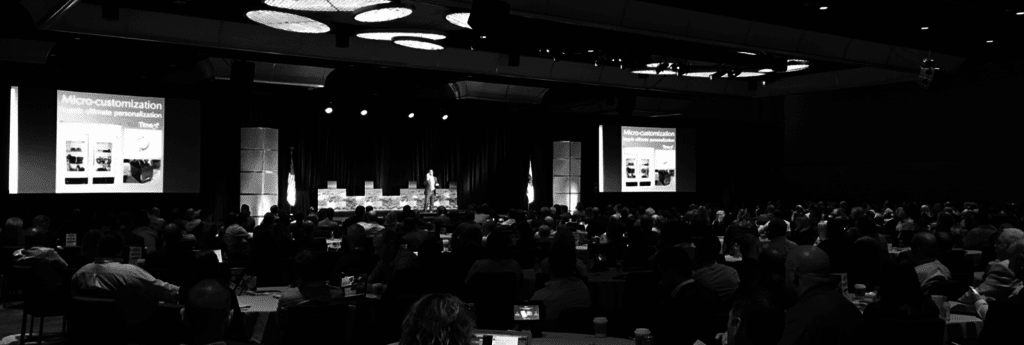Data, The Cloud and Back Office Tools: What We learned at FSTEC 2017

FSTEC 2017 was a great opportunity to see some of the exciting innovations happening in the foodservice industry. It was heartening to hear so many industry experts addressing tangible business challenges with a solutions-focused approach; a theme that informed many of the conference’s sessions.
FSTEC knows how to create the right kind of dialogue around foodservice, like how to use data to drive customer loyalty. Retail has been leading the charge in utilizing new technologies to modernize business operations, but after our three days at FSTEC, it is clear that food service is right on its heels. Here are some of the top trends and industry insights we learned this year:
Big Data and the Customer Experience
Data is not a new theme in food service. Harnessing the mind-numbing amount of data available to brands has been a hot topic with the rise of mobile technology. This year was no different, but the focus of the conversation shifted from the best ways to capture data to how brands are utilizing this information to achieve better business results.
The organic and all-natural Bareburger is no stranger to bold innovation; they were the first fast casual establishment to serve the Impossible Burger at their NYU location. The ability for their business tools to collect and visualize data is high on the list when evaluating a new technology. Their data strategy enables every operation to have a metric tied to it, and the real-time data is incorporated into daily processes to improve overall back of house operations, aiding in that seamless dining experience.
B.GOOD, an international and mission-driven fast casual restaurant chain, shared that the most cost effective tactic is to drive loyalty within their customer base. B.GOOD utilizes streaming data capture (every 60 seconds) to improve brand consistencies; alerting their District Managers about which locations they should be spending time at, instead of wasting time doing redundant check ins. The franchise is also able to track their speed of service for every order with ticket level data, identity issues, and fix them in real time. This enables B.GOOD’S workforce to perform in its highest capacity, leading their guests to have consistently pleasant experiences that keep them coming back for more.
Impact of the Cloud
Cloud-based platforms have been emerging as one of the most vital technologies within foodservice. Enabling disparate workforces with the data and content they need across all locations is helping to reduce onboarding and deployment times.
Retail industry experts Boston Retail Partners listed cloud-centric infrastructure as one of the top six technology imperatives for restaurant operations in 2017. There are many benefits of switching from hosted services to cloud infrastructure, including:
- Improving overall restaurant efficiency
- Enabling personalized and engaging experiences delivered by front of house
- Increasing labor productivity for the back of house
The food-truck-turned-local chain The Eastman Egg Company, started utilizing cloud-based technology as much as possible because their legacy systems didn’t work for a food truck. Patrons of their delicious egg sandwiches could order them in 2 ways: on their mobile devices and onsite. Because perceived wait time is a huge differentiator in building customer loyalty, speed of service became the primary business concern. A cloud-based POS system allowed the Eastman Egg Company to fully optimize the made-to-order side of their business, unpack the process to find ways to streamline, and maintain efficiency. These innovations allow Eastman Egg Company to maintain their farm-to-table approach to quick-service breakfast and lunch while scaling their business beyond the food truck.
Back Office Tools – The Secret Weapon of Restaurant Operations
So you’ve got an App and the right cloud infrastructure to handle all that business you’ve built through your Loyalty programs. How do you scale the success of your innovations across all your locations? Are you able to access and visualize your data at the pace your business moves?
We noticed quite a number of session speakers addressing the importance of a solid back office system as the final piece in the trifecta of foodservice business growth. A successful digital transformation for your retail or franchise operation hinges on access to real-time analytics and searchable information. Vendors are focused on integrating an existing tech stack with a powerhouse back office tool, enabling restaurants to keep pace with the technological gains of both their industry and customers.
Fast casual dining staple Arby’s is focused on connecting a fragmented set of back office tools to future-proof the scale they are looking at in the next few years. With 31 POS systems across their organization, it’s a primary objective to unify the existing technologies to create a consolidated, standardized way of looking at their business metrics.
As companies bring in more customer-facing technologies, it’s imperative to make sure back-end systems can support exciting innovations. At the end of the day, keeping operations efficient and delivering memorable experiences to guests is what it’s all about.
Learn how Inkling Knowledge can help improve your restaurant operations, take it for a test drive.
